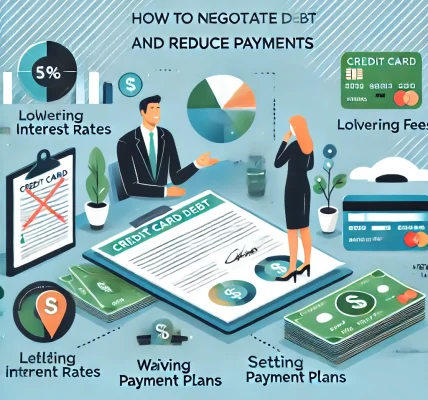Introduction
Having bad credit can make securing a loan challenging, but it’s not impossible. Many lenders offer loan options to borrowers with low credit scores, but they often come with high-interest rates and unfavorable terms. The key is to find the right lender, improve your financial standing, and avoid predatory lending practices. In this guide, we’ll explore strategies to secure a loan with bad credit while keeping interest rates manageable.
Understanding Your Credit Score
Before applying for a loan, it’s important to understand your credit score and what it means for borrowing. Your credit score is a numerical representation of your creditworthiness, and it influences the interest rate and terms you’ll receive.
Factors That Affect Your Credit Score
- Payment History (35%) – Late or missed payments negatively impact your score.
- Credit Utilization (30%) – A high credit card balance can lower your score.
- Length of Credit History (15%) – A longer history with good standing improves your score.
- New Credit Inquiries (10%) – Too many recent credit applications can reduce your score.
- Credit Mix (10%) – A diverse credit portfolio is beneficial.
Checking Your Credit Report
Get a free copy of your credit report from agencies like Experian, Equifax, or TransUnion. Review it for errors and dispute any inaccuracies that might be dragging down your score.
Steps to Secure a Loan with Bad Credit
1. Improve Your Credit Score Before Applying
Even a slight improvement in your credit score can lead to better loan terms. Here are some quick ways to boost your credit:
- Pay off outstanding debts or make extra payments to reduce balances.
- Ensure all bills are paid on time.
- Avoid applying for multiple loans or credit cards at once.
- Consider becoming an authorized user on a responsible person’s credit account.
2. Explore Alternative Lenders
Traditional banks may be hesitant to lend to individuals with bad credit, but alternative lenders offer more flexible options:
- Credit Unions: Often provide loans with lower interest rates than banks.
- Online Lenders: Many specialize in bad credit loans and have quick approval processes.
- Peer-to-Peer (P2P) Lending: Platforms like LendingClub connect borrowers with individual investors.
- Family or Friends: If possible, borrowing from a trusted friend or family member can be an option.
3. Consider Secured Loans
If you’re struggling to qualify for an unsecured loan, a secured loan can be a great option. These require collateral, such as a car or savings account, which reduces the lender’s risk and can lead to lower interest rates.
4. Compare Loan Offers
Never accept the first loan offer you receive. Instead, compare multiple lenders and check for:
- APR (Annual Percentage Rate): Lower is better.
- Loan Terms: Longer terms may mean lower monthly payments but higher overall interest.
- Hidden Fees: Look for origination fees, prepayment penalties, and late fees.
- Customer Reviews: Check lender credibility to avoid scams.
5. Get a Co-Signer
A co-signer with good credit can help you qualify for a loan with better terms. However, this means they are responsible for repaying the loan if you default.
6. Avoid Predatory Lenders
Be cautious of lenders that target individuals with bad credit and charge excessive interest rates. Signs of a predatory lender include:
- Guaranteed approval with no credit check.
- Interest rates significantly higher than market rates.
- Requests for upfront fees before loan disbursement.
Smart Ways to Avoid High-Interest Rates
Negotiate with Lenders
Some lenders are willing to negotiate terms, especially if you have a stable income or a strong repayment plan.
Refinance Your Loan
If you’ve taken out a high-interest loan, consider refinancing once your credit improves. This allows you to replace your loan with a lower-interest one.
Use a Credit-Building Loan
Some lenders offer credit-building loans where payments are reported to credit bureaus, helping you rebuild your score over time.
Conclusion
Getting a loan with bad credit requires careful planning and research to avoid excessive interest rates and predatory lenders. By understanding your credit score, exploring alternative lending options, and implementing smart financial strategies, you can secure a loan while working toward better financial health. Always read the terms carefully and ensure that your loan choice aligns with your repayment ability.
Taking the right steps today can help you improve your financial standing and secure better loan opportunities in the future.




